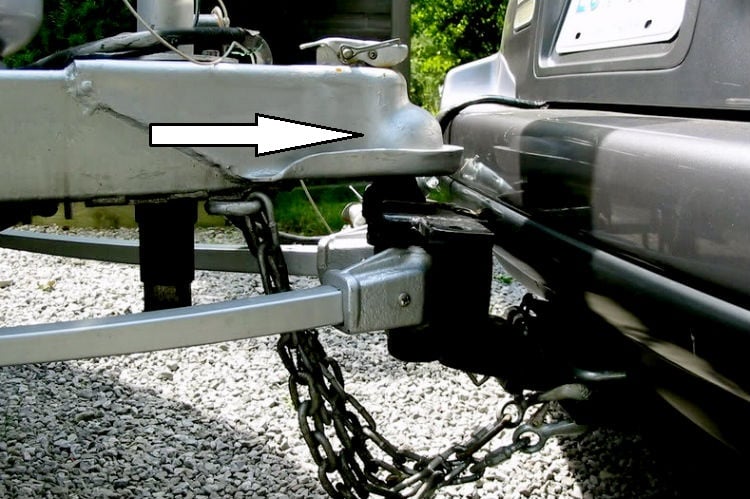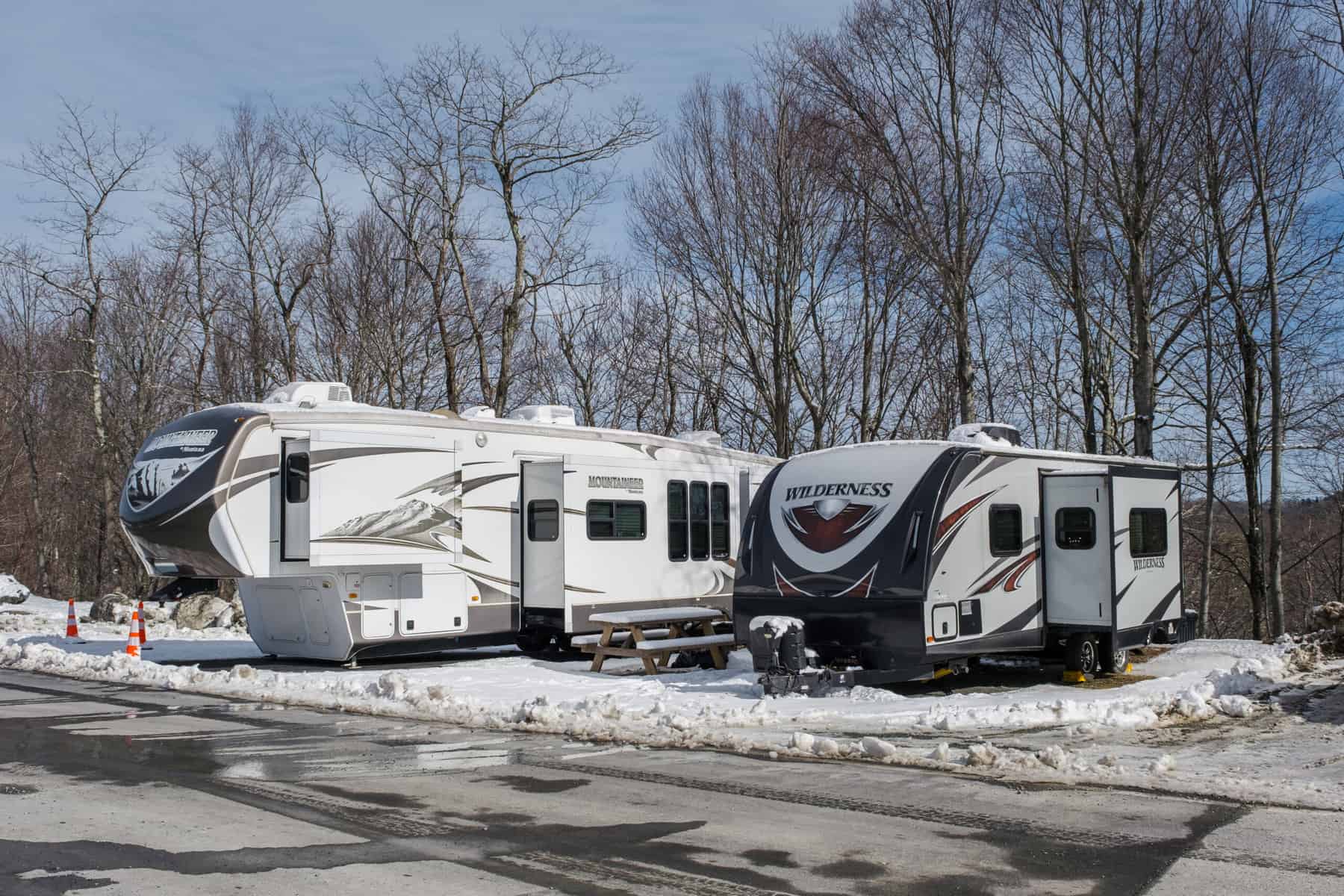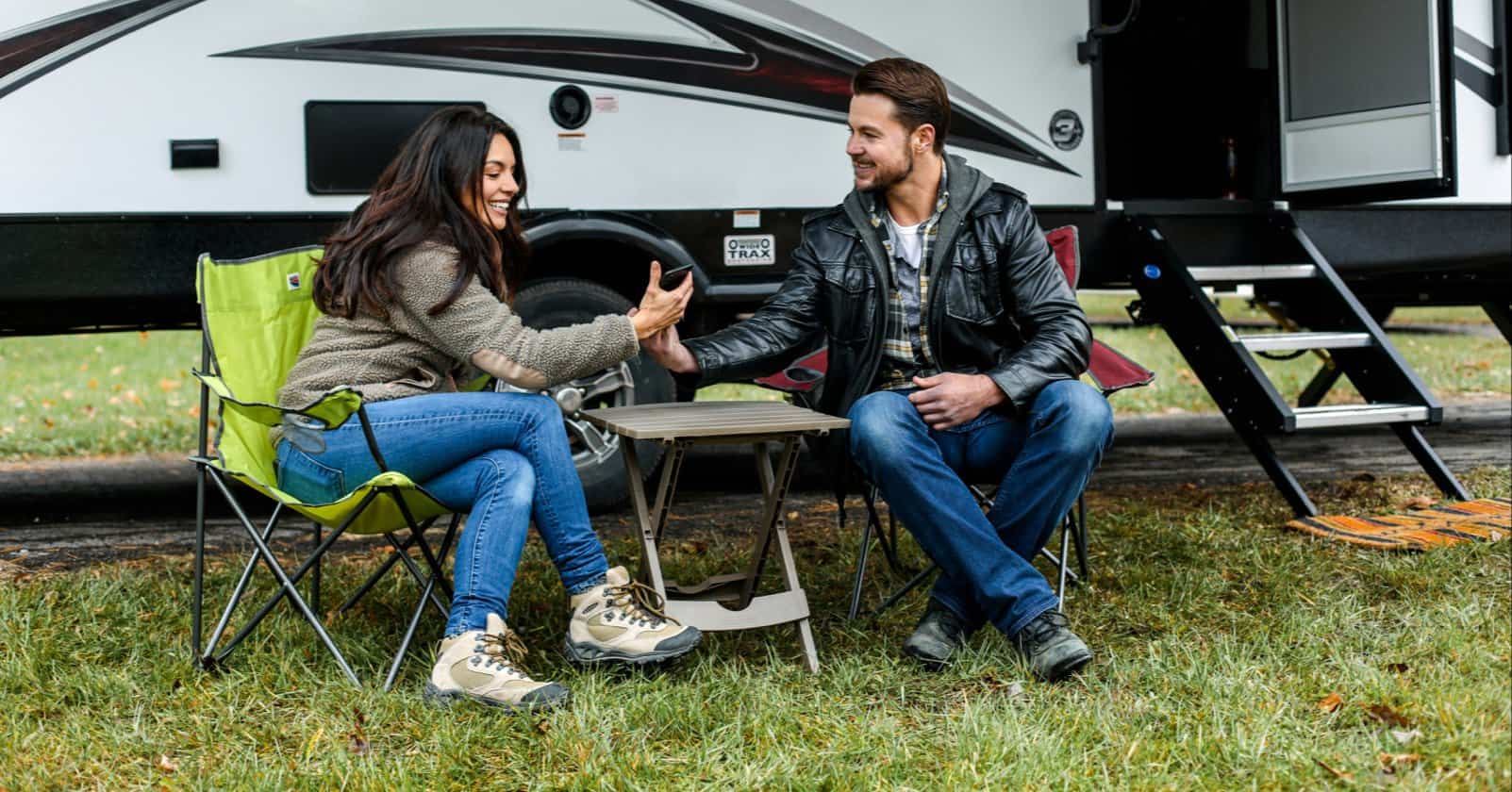If you just started RVing, these top causes of travel trailer sway are a must-read before you hit the highway in your new rig.
The Top Ten Causes of Travel Trailer Sway
From overloading your trailer, to towing with the wrong vehicle, trailer sway can put you in a potentially life-threatening situation. Before you ever hit the road with your travel trailer, be sure you know how to avoid this dangerous RV driving condition.
Overloading your trailer
Carrying too much weight can cause travel trailer sway and hazardous conditions. Understand how to keep your camper within its trailer gross vehicle weight rating (GVWR) and gross combined weight rating (GCWR). Then, assess your cargo, and ditch what you don’t need. For ultimate peace of mind, know the worst and best way to weigh RVs and get your RV to a weigh scale.
Poor weight distribution
Be conscious of your travel trailer’s weight, and adjust cargo if necessary. The weight over the hitch ball should be anywhere from 9 to 15 percent of the total weight of a fully loaded trailer. Anything less than that would require adding weight for balance and to avoid travel trailer sway.

Unsuitable tow vehicle
It is unsafe for a small, light vehicle to pull a large heavy trailer. The wrong tow vehicle pulling a heavy load is a huge cause of travel trailer sway. To avoid it, make sure your tow vehicle you is appropriate for the travel trailer you are towing. Your RV tow vehicle should be able to handle the RV gross vehicle weight rating (GVWR) of your camper trailer.
Bad hitch adjustments
You can prevent travel trailer sway by avoiding it in the first place. How? By adjusting the hitch to suit the configuration of your tow vehicle and camper trailer. Several hitch adjustments exist in the marketplace. All work collectively to spread tongue weight evenly through the trailer. Here’s what you can do?
- Adjust the hitch ball height to keep the trailer level
- Install weight distribution hitch bars to keep the tow vehicle level
- Fine-tune the hitch head angle to keep the bars level
Low tire pressure
One of the biggest causes of tire failure (RV tire blowouts) is under-inflated tires. Never drive with underinflated tires. Follow a schedule of routine tire maintenance that includes checking RV tire pressure. The amount of air pressure necessary for safe driving can be found on the inside of your tow vehicle driver side door. Always do a tire pressure check on cold tires.
No sway control kit
Having a travel trailer sway control kit installed can prevent side-to-side travel trailer sway in the first place. These kits rely on frictional forces to keep your trailer from shifting. By doing so, they prevent sway build-up. There are two types of friction sway control systems — independent and dependent.
Incorrect hitch ball spacing
Adjust the space between the tow vehicle rear axle and the hitch ball. The shorter the distance between the two, the safer the ride. The safe way to hitch a travel trailer looks like this:
- Align the ball directly under the trailer coupler.
- Open the coupler (ensure the clamp inside the coupler is open)
- Lower the coupler onto the hitch ball.
Then get out of your tow vehicle. Visually and physically inspect the coupler clamp to ensure it’s secured around the hitch ball.

Wind bursts from passing big rigs and RVs
When a large vehicle like a semi-truck or motorhome passes you, the air pressure can push and pull against the travel trailer. Be prepared by observing the road ahead and checking your mirrors regularly. When you see a bigger vehicle approach, gently steer in the direction of the sway to compensate.
Fast downhill driving
Take it slow on descents, especially while driving RVs on steep mountain grades. If you find yourself on one, gently apply the brakes and downshift into lower gears. Heavy breaking can cause travel trailer sway, and force the trailer to jack-knife. If you feel the sway getting worse, gently accelerate if you can do it safely.
Dangerous wind gusts
Strong winds are one of the biggest causes of travel trailer sway. Lateral gusts are particularly treacherous and can knock against the side of the vehicle with extreme force. Avoid driving on windy days. High winds more than 20-25 mph are hazardous. If strong winds develop while you’re driving, slow down. If possible, stop the vehicle completely and park until wind subsides.
You Can Control Travel Trailer Sway
Keeping a camper trailer steady on the road is a tricky thing for new RV owners. Even the best travel trailers are prone to swaying. Don’t ignore it, because travel trailer sway accidents kill. Now that you know the causes of this dangerous condition, you are ready to do something about it.




